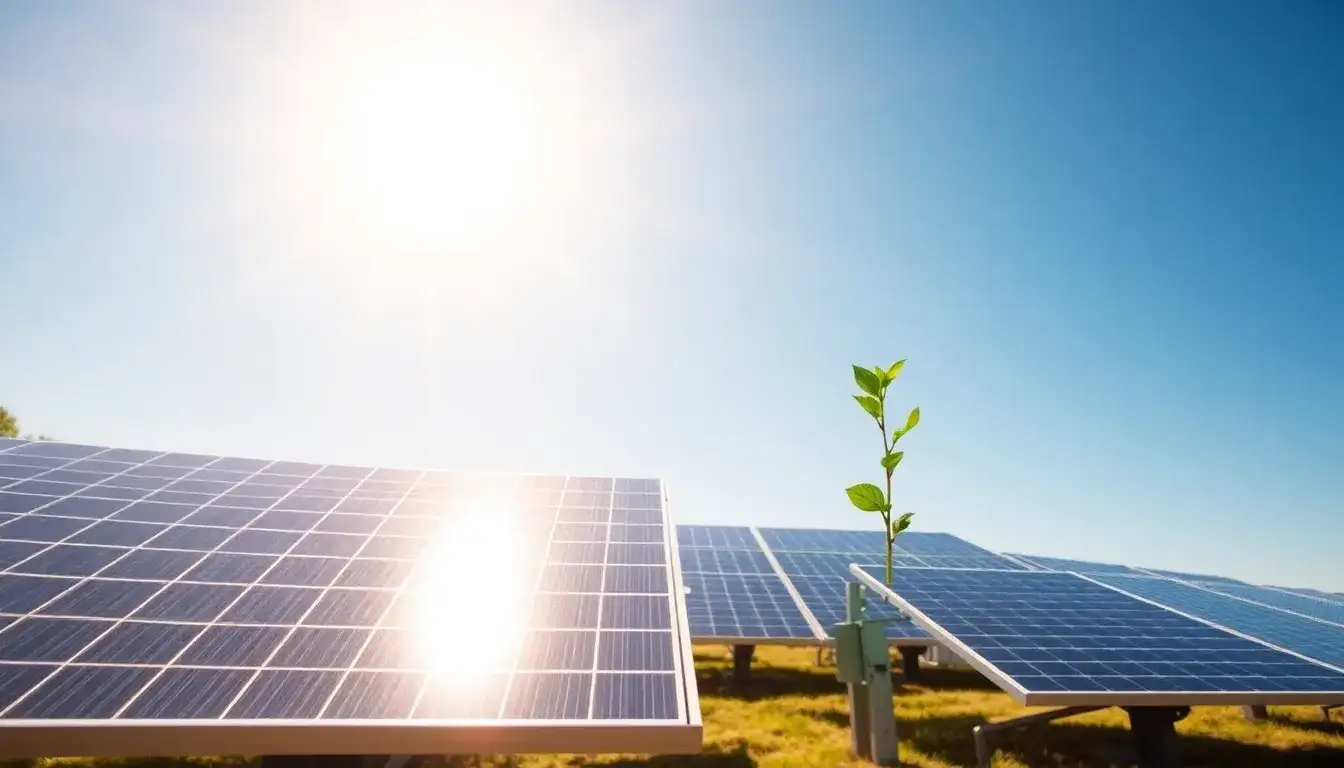
Latest Announcement! In February, the photovoltaic power generation utilization rate reached 93.4%, and attention is growing on the investment opportunities in the photovoltaic ETF fund (516180).
As of April 3, 2025, at 13:43, the CSI Photovoltaic Industry Index (931151) experienced a decline of 2.14%. Among the constituent stocks, Zhejiang Xinneng (600032) led with a gain of 6.99%, followed by Nanwang Energy (003035) with an increase of 0.94%, and Jinko Solar (601778) up by 0.71%. Conversely, Sunshine Power (300274) fell 7.11%, Hengdian East Magnetic (002056) decreased by 5.38%, and Bowei Alloy (601137) was down 4.47%. The photovoltaic ETF fund (516180) declined by 2.01%, with the latest price at 0.58 yuan and a trading volume of 3.2652 million yuan, resulting in a turnover rate of 5.17%.
On April 2, the National New Energy Consumption Monitoring and Early Warning Center released data indicating that the photovoltaic power generation utilization rate for February stood at 93.4%, while wind power utilization was at 92.9%.
According to Founder Securities, a combination of quantity and price policies has led to a surge in short-term demand, resulting in a slight increase in module prices (up by 0.85 yuan/W). In terms of supply, the clearing of excess capacity is accelerating, reflecting structural optimization. There is an overcapacity situation in the silicon material, silicon wafer, cell, and module segments, with many companies halting or transferring projects or ceasing production since Q3 2023. Major enterprises are reducing production, spurred by policy and industry self-regulation.
In terms of new technology, under pressure for profitability, there is an acceleration in technological iteration. The BC technology is being rapidly deployed by Longi and Aiko, featuring a front-side no-busbar design that enhances efficiency, suitable for distributed scenarios. Trends toward reduced silver or silver-free technologies, such as copper plating, silver-coated copper, and 0BB, are bringing down metallization costs and are compatible with TOPCon, HJT, and BC routes. HJT technology is expected to further optimize costs by 2025 due to reduced silver usage and equipment depreciation.
Perovskites are also showing higher theoretical efficiencies, with multiple 100 MW production lines expected to be established by 2025, indicating significant potential when combined with crystalline silicon.
Policy directions include ongoing control of effective supply within the photovoltaic industry to promote high-quality development of new energy. The push for supply-side reforms is accelerating, with continuous industry self-regulation and multiple policies being introduced to guide structural adjustments. Future policies are expected to reinforce these efforts. Additionally, the marketization of electricity pricing is deepening, as the new regulations in 2025 will eliminate fixed prices for incremental projects, promoting competitive bidding and accelerating the full market entry of new energy.
Investors can leverage the photovoltaic ETF fund (516180) and the new materials ETF index fund (516890) to capitalize on investment opportunities in related industries.
The photovoltaic ETF fund closely tracks the CSI Photovoltaic Industry Index, which selects up to 50 representative listed companies involved in the upstream, midstream, and downstream segments of the photovoltaic industry chain to reflect the overall performance of securities in this sector.
As of March 31, 2025, the top ten weighted stocks in the CSI Photovoltaic Industry Index (931151) are Longi Green Energy (601012), Sunshine Power (300274), TCL Technology (000100), TBEA (600089), Tongwei (600438), TCL Zhonghuan (002129), Jinko Solar (688223), Chint Electric (601877), Deye Technology (605117), and JA Solar Technology (002459), with these top ten accounting for 55.78% of the total index weight.
The new materials ETF index fund closely tracks the CSI New Materials Theme Index, which selects 50 listed companies involved in advanced steel, non-ferrous metals, chemicals, inorganic non-metals, and other key strategic materials to represent the overall performance of securities in the new materials sector.
As of March 31, 2025, the top ten weighted stocks in the CSI New Materials Theme Index (H30597) include CATL (300750), North Huachuang (002371), Wanhua Chemical (600309), Longi Green Energy (601012), Sanan Optoelectronics (300408), Tongwei (600438), Huayu Cobalt (603799), Sanan Optoelectronics (600703), Greeenme (002340), and Baofeng Energy (600989), with these top ten representing 52.75% of the index weight.
Related products include the photovoltaic ETF fund (516180), Ping An Photovoltaic Index Fund (Class A: 012722; Class C: 012723), and the new materials ETF index fund (516890).







